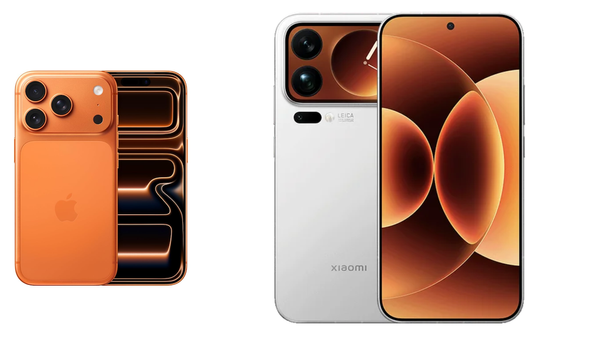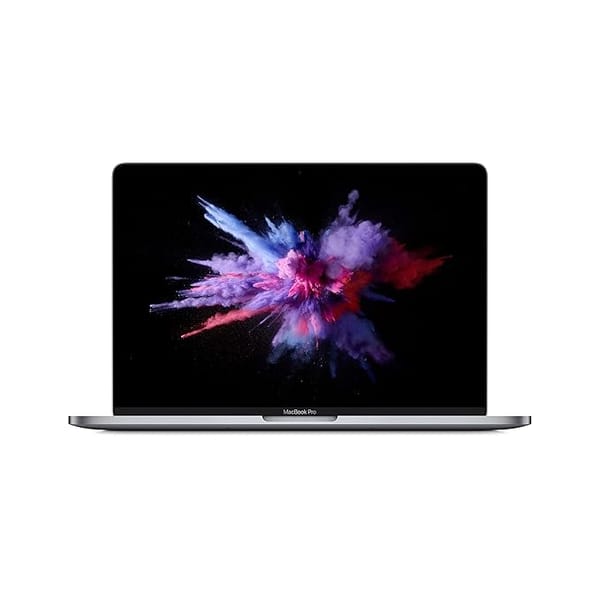What Is Thunderbolt Technology?
Thunderbolt technology is more than just a connectivity standard; it’s a gateway to unlocking the full potential of modern devices. By offering speed, simplicity, and versatility in one elegant solution, Thunderbolt empowers users to work, play, and create without limitations.

In the age of relentless technological advancement, where speed and efficiency govern the digital landscape, Thunderbolt technology emerges as a transformative force. Pioneered by Intel in collaboration with Apple, Thunderbolt has reshaped the way we think about connectivity, combining lightning-fast data transfer speeds, versatile functionality, and unmatched convenience. But what exactly is Thunderbolt, and why has it become a game-changer in modern computing? Let's delve deep into the world of Thunderbolt technology, exploring its origins, features, applications, and the bright future it holds.
The Birth of Thunderbolt
Thunderbolt technology traces its roots back to 2011 when Intel and Apple introduced it as a groundbreaking connectivity standard. Initially branded as "Light Peak," (reflecting to its logo on the port) it was conceived as a high-speed optical data transfer medium. However, practical considerations shifted its design toward copper-based implementations, which proved to be cost-effective and equally capable of achieving astounding speeds.
The first iteration, Thunderbolt 1, debuted in Apple's MacBook Pro lineup, offering a dual-channel architecture with speeds of up to 10 Gbps per channel. This marked a significant leap compared to its contemporaries, making it an instant hit among creative professionals, gamers, and tech enthusiasts.
The Evolution of Thunderbolt
Over the years, Thunderbolt has evolved through multiple iterations, each surpassing its predecessor in terms of speed, features, and compatibility.
Thunderbolt 2
Released in 2013, Thunderbolt 2 doubled the bandwidth to 20 Gbps by combining the two 10 Gbps channels into a single bi-directional channel. This upgrade enhanced performance for 4K video editing and external storage solutions, making it a go-to choice for content creators.
Thunderbolt 3
In 2015, Thunderbolt 3 revolutionised the standard by embracing the USB-C connector, a universal port celebrated for its reversible design and widespread adoption. This iteration offered blazing speeds of up to 40 Gbps, support for dual 4K displays or a single 5K display, and the ability to charge devices with up to 100W of power delivery. Its integration with USB-C also simplified connectivity, enabling compatibility with a vast array of peripherals.
Thunderbolt 4
Introduced in 2020, Thunderbolt 4 refined the standard further, maintaining the 40 Gbps bandwidth while enhancing security, expanding PCIe data rates, and increasing minimum performance requirements. It also mandated support for up to two 4K displays, ensuring a seamless experience across diverse use cases.
Key Features of Thunderbolt Technology
What sets Thunderbolt apart from other connectivity standards? Let’s explore its standout features:
- Unmatched Speed: Thunderbolt’s data transfer speeds—up to 40 Gbps—outpace many contemporary standards, ensuring rapid file transfers, smooth video editing, and lag-free gaming.
- Versatility: Beyond data transfer, Thunderbolt supports video output, device charging, and peripheral connectivity through a single cable, reducing cable clutter and enhancing productivity.
- Daisy-Chaining: Thunderbolt allows users to connect up to six devices in a daisy-chain configuration, such as external storage, displays, and docking stations, using a single port.
- Power Delivery: With support for up to 100W of power delivery, Thunderbolt can charge laptops, smartphones, and other devices, eliminating the need for additional power adapters.
- Backward Compatibility: Thunderbolt’s adoption of the USB-C connector ensures compatibility with USB devices, making it a versatile solution for modern users.
Sure! Thunderbolt 4 and USB-C are often compared because Thunderbolt 4 utilizes the USB-C connector. However, while they share the same physical port, their features and performance differ significantly. Let’s break it down:
Thunderbolt 4 vs. USB-C
Thunderbolt 4 and USB-C are often compared because Thunderbolt 4 utilizes the USB-C connector. However, while they share the same physical port, their features and performance differ significantly. Let’s break it down:
1. Speed
- Thunderbolt 4: Offers up to 40 Gbps data transfer speeds, ensuring rapid transfers of large files, including 4K/8K video streams and extensive datasets.
- USB-C (standard USB 3.2 Gen 2): Typically maxes out at 10 Gbps, significantly slower compared to Thunderbolt 4.
2. Features
- Thunderbolt 4: Supports dual 4K displays or a single 8K display, daisy-chaining of up to six devices, and power delivery up to 100W.
- USB-C: While versatile, features vary depending on the protocol running over it (e.g., USB 3.2, DisplayPort, or Power Delivery). It may support video output and charging, but not to the extent of Thunderbolt 4.
3. Backward Compatibility
- Thunderbolt 4: Backward-compatible with previous Thunderbolt versions, USB-C devices, and USB standards. It offers flexibility and ecosystem integration.
- USB-C: Compatible with USB versions but lacks the advanced features Thunderbolt offers.
4. Security
- Thunderbolt 4: Includes stringent security measures, such as DMA protection, which safeguards against malicious device attacks.
- USB-C: Security levels depend on implementation; it does not inherently provide Thunderbolt’s robust protections.
5. Cost
- Thunderbolt 4: Generally pricier due to its advanced capabilities and high-performance requirements.
- USB-C: More affordable and widely available, often included in consumer devices.
Comparison Table
| Feature | Thunderbolt 4 | USB-C |
|---|---|---|
| Maximum Speed | Up to 40 Gbps | Up to 10 Gbps (USB 3.2 Gen 2) |
| Connector Type | USB-C | USB-C |
| Video Support | Dual 4K or single 8K displays | Varies (depends on implementation) |
| Power Delivery | Up to 100W | Up to 100W (depends on implementation) |
| Daisy-Chaining | Up to 6 devices | Not supported |
| Backward Compatibility | Thunderbolt & USB standards | USB standards only |
| Security Features | DMA protection | Varies |
| Cost | Higher | Lower |
Which Should You Choose?
The decision between Thunderbolt 4 and USB-C depends on your use case:
- Choose Thunderbolt 4 if you need ultra-high speeds, advanced security, multiple display support, or daisy-chaining.
- Choose USB-C for general connectivity, affordability, and basic functionality.
Applications of Thunderbolt Technology
Thunderbolt technology’s versatility makes it a cornerstone of various industries and applications. Here are some key areas where Thunderbolt shines:
1. Creative Workflows
For professionals in video editing, graphic design, and 3D rendering, Thunderbolt provides the speed and bandwidth necessary to handle massive files and high-resolution content. External SSDs, eGPUs, and 4K monitors seamlessly integrate with Thunderbolt-enabled devices, creating a powerhouse setup for creativity.
2. Gaming
Gamers benefit from Thunderbolt’s ability to connect high-performance peripherals, such as external GPUs, gaming monitors, and storage solutions. The reduced latency and enhanced graphics capabilities result in a superior gaming experience.
3. Business and Productivity
In the corporate world, Thunderbolt docking stations have become indispensable, offering a hub for connecting monitors, keyboards, mice, and other peripherals. This streamlined connectivity enhances productivity and simplifies workspace management.
4. Virtual Reality (VR)
VR demands high bandwidth and low latency, making Thunderbolt an ideal choice for connecting VR headsets, sensors, and powerful computing setups.
5. Data Centers and Networking
Thunderbolt’s rapid data transfer speeds have found applications in data centers, enabling faster backups, efficient storage solutions, and seamless server connectivity.
Thunderbolt and Ecosystem Integration
One of Thunderbolt’s standout features is its ability to integrate seamlessly into ecosystems, particularly in devices like laptops, desktops, and workstations. Apple has been a strong proponent of Thunderbolt, incorporating it into MacBooks, iMacs, and Mac Minis to support its ecosystem’s interconnected workflows.
However, Thunderbolt is not confined to the Apple universe. Leading PC manufacturers like Dell, HP, and Lenovo have adopted Thunderbolt, offering users the flexibility to build versatile setups across diverse operating systems.
The Future of Thunderbolt
As technology continues to advance, Thunderbolt remains at the forefront of connectivity innovation. The upcoming Thunderbolt 5 standard promises to push boundaries even further, with rumored features including:
- Speeds exceeding 80 Gbps, doubling the bandwidth of Thunderbolt 4.
- Improved support for high-resolution displays, such as 8K monitors.
- Enhanced power delivery capabilities to accommodate more demanding devices.
These advancements are expected to drive adoption across consumer electronics, enterprise solutions, and even automotive industries, cementing Thunderbolt’s role as the ultimate connectivity solution.

Challenges and Considerations
Despite its numerous advantages, Thunderbolt is not without its challenges. Cost is a significant barrier, as Thunderbolt-enabled devices and cables tend to be pricier compared to alternatives like USB. Additionally, while Thunderbolt’s adoption is growing, it is still less ubiquitous than USB, which remains the dominant standard.
Security concerns also persist, as the direct memory access (DMA) feature of Thunderbolt can potentially expose systems to vulnerabilities. However, Thunderbolt 4 has addressed these concerns with enhanced protections, mitigating risks and ensuring user safety.
Conclusion
In a world where digital workflows demand seamless connectivity and lightning-fast speeds, Thunderbolt has emerged as a technology that bridges the gap between ambition and reality. Its ability to deliver unparalleled performance, combined with its versatility and ecosystem integration, makes it an indispensable tool for professionals, gamers, and everyday users alike. From its humble beginnings as an ambitious project to its current status as a gold standard in connectivity, Thunderbolt technology embodies the spirit of innovation. As it continues to evolve and adapt, it is poised to redefine what’s possible in the realm of digital communication and interaction.
Thunderbolt technology is more than just a connectivity standard; it’s a gateway to unlocking the full potential of modern devices. By offering speed, simplicity, and versatility in one elegant solution, Thunderbolt empowers users to work, play, and create without limitations. As we look to the future, one thing is certain: Thunderbolt will continue to be a driving force behind the technology that shapes our lives.




